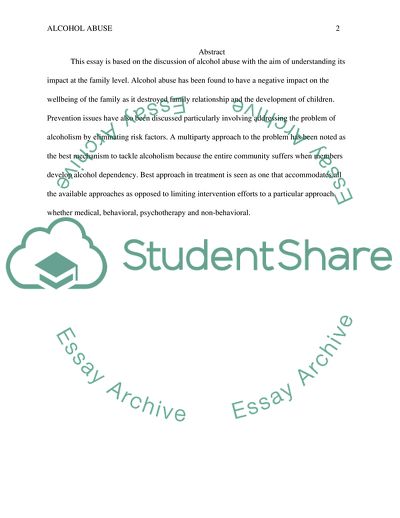Cite this document
(Alcohol Abuse and Its Impact on the Family Research Paper Example | Topics and Well Written Essays - 3000 words - 1, n.d.)
Alcohol Abuse and Its Impact on the Family Research Paper Example | Topics and Well Written Essays - 3000 words - 1. https://studentshare.org/health-sciences-medicine/1851969-alcohol-abuse
Alcohol Abuse and Its Impact on the Family Research Paper Example | Topics and Well Written Essays - 3000 words - 1. https://studentshare.org/health-sciences-medicine/1851969-alcohol-abuse
(Alcohol Abuse and Its Impact on the Family Research Paper Example | Topics and Well Written Essays - 3000 Words - 1)
Alcohol Abuse and Its Impact on the Family Research Paper Example | Topics and Well Written Essays - 3000 Words - 1. https://studentshare.org/health-sciences-medicine/1851969-alcohol-abuse.
Alcohol Abuse and Its Impact on the Family Research Paper Example | Topics and Well Written Essays - 3000 Words - 1. https://studentshare.org/health-sciences-medicine/1851969-alcohol-abuse.
“Alcohol Abuse and Its Impact on the Family Research Paper Example | Topics and Well Written Essays - 3000 Words - 1”. https://studentshare.org/health-sciences-medicine/1851969-alcohol-abuse.


